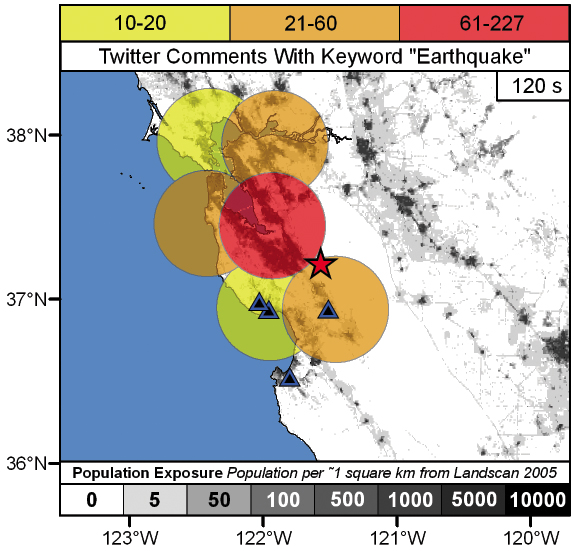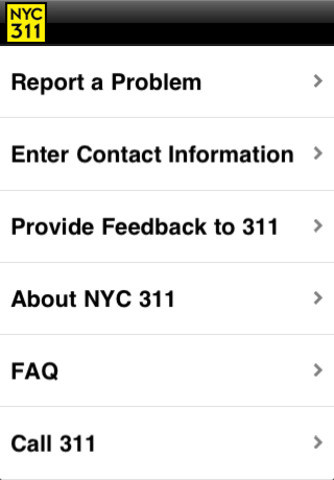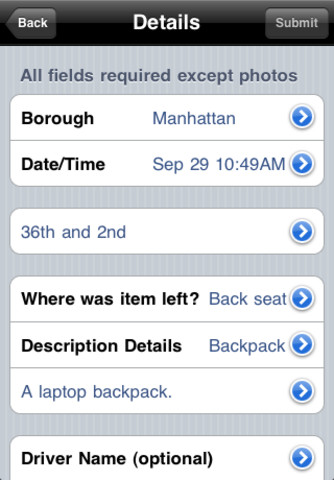Over the next couple of days I am going to post summaries of Internet Week sessions that I attended last month. Here is the first, a panel on open government in NYC:
In June, I attended a panel on Open Goverment in NYC, hosted by Time Warner as part of Internet Week NYC. I joined my friend, Queens Community Board 3 member, Tom Lowenhaupt, who has been advocating for a .NYC top level domain for over ten years. Given some of the road blocks he has faced in his campaign, I knew attending an Open Government forum with him would be interesting.
Presented in a panel format, the event focused on Setting the Digital Standard for open government. NYC Deputy Mayor for Operations Stephen Goldsmith introduced Jesse Hempel, a senior writer for Fortune Magazine, who moderated a panel of experts in government information technology including:
- Adam Sharp, CEO, Twitter
- Carol Post, Commissioner, NYC Department of Information Technology and Telecommunications (DoITT)
- Rachel Sterne, Chief Digital Officer, NYC
- Seth Pinsky, President, NYC Economic Development Corporation
Commissioner Post opened with a brief description of the city’s plans for a digital roadmap, including a range of web 2.0 tools that allows the City to to communicate and join with citizens to make a better city, break through hardened boundaries between people, neighborhoods, agencies, etc. “The fundamental responsibility of government being to allow access to information,” she said.
An example is the “311 to Text” project, a platform for app developers, that allows the power of the 311 service to reach a mobile community, in particular, underpriviledged people whose primary access to city information and the internet at large is via their mobile phones. Carole indicated that the 311 phone channel has been very successful, so it is a priority of her office to get the message about the system and its various access points out to users.
There is even a 311 iPhone app (clearly for those who can afford an iPhone). I have a neighbor who would love that.
Image from iTunes, Apple Inc.
Chief Digital Officer, Rachel Sterne, the 27-year-old founder of citizen journalism site GroundReport and an adjunct professor of social media and entrepreneurship at the Columbia Business School, described the City’s digital domain, reaching 2.8 million on NYC.gov, 1.4 million on social media. Some of these include @nycgov, an umbrella Twitter account for the city, @nycmayorsoffice, which also has its own hashtag #askmike, referring to Mayor Michael Bloomberg. In addition, 311 NYC Twitter account (@311nyc) focuses on service related questions, maintaining a public record of issues. Agencies also have twitter accounts, the and similar department Twitter feeds). The primary focus for these efforts is access, open government, engagement and accessibility.
NYC Economic Development Corporation President, Seth Pinsky, took a turn explaining his view of the role of technology in NYC. “New technology lowers the barriers to entry in industries where NYC is traditionally a leader. It helps industries transition to new business models, promoting entrepreneurship, and highlight talented workforce,” he said.
Adam Sharp of Twitter discussed how he sees governments using Twitter and compared how NYC measures up. “Technology is good at wholesaling mass audience, and is scalable,” he said. But there is a growing gap of people who have actually met their pubic servants. There has been confusion about who to contact for which services. Technology like Twitter allows increased interaction and communication with public figures.
Mr. Sharp sees innovation particularly at the federal level. USGS is using Twitter to spot seismographic activity 2 minutes earlier. The agency has seismographs in various parts of the country that measure earthquake activity with feedback within 60 seconds of the quake; however, they have found that often tweets from citizens experiencing quakes allow them to locate possible activity faster, so they have set up the experimental Twitter Earthquake Detection project to test how well Twitter can work in reporting possible disasters. I had tweeted about this myself the day before. For a more local example, Adam noted that Newark, NJ’s mayor was using it for response for snow removal during winter storms, showing up Mayor Bloomberg a bit after this past year’s storm mitigation problem, and which citizens were quite vocal about on the social media at the time.
 |
| Image from Recover.gov, U.S. Dept of the Interior. |
Mr. Pinsky described social media in government as a process. The first generation of tools are designed to get the information out to the public (like press releases, broadcasts). The second generation gets information from the public (web forms, phone systems). The third generation, where we are now, is interaction: the open and ongoing conversation between government and citizens (Twitter, Big Apps Challenge, Change By Us – a new initiative launched on July 7, 2010, which is very similar to the Institute for Urban Design’s By the City, For the City app). The hard part to all this, says Seth, is linking incoming and outgoing messages to see the conversation. That is something that needs some work.
Ms. Sterne said that the BigApps competition was launched in response to the significant amount of data at agencies that was either not available to the public or not really being used by the agencies. Big Apps gets that data out to development community to create applications that citizens can use. This in turn, spurred the creation of several businesses, which is in line with the City’s push toward fostering a friendlier environment for entrepreneurship in New York City, a noticeable part of PlaNYC 2030, the City’s plan for a “greener, greater New York,” with a ideas for improving the quality of life and economic welfare of New York City.
The second round of the Big Apps Competition this year, doubled the number of data sets and had a much higher number of responses from developers and sponsors. This year, sponsor BMW doubled its prize offering and set up venture capital fund for startup businesses.
Some of the Big Apps Winners:
- Roadify – (2010) traffic/transit delays, parking spaces; draws from google transit, mta data, crowd sourced information.
- donteat.at – (2010) list of restaurants with health code violations
- My City Way – (2009 winner that ultimately received a $300,000 grant from Michael Bloomberg) broad range of city data, wifi hotspots, restaurants
At this point, Ms. Hempel began asking directed questions tot he panelists. She asked panelist Adam Sterne how much government activity on Twitter is citizen led. He said that this it isn’t necessarily happening yet, but will happen when government sees it as more than a broadcast forum, and when it relieves pressure on other platforms, such as calls. Cities are learning lessons from the private sector about adopting a customer service approach, proactively looking for mentions of their brands and engaging customers. It is a messaging and marketing focus that will evolve as more initiatives like BigApps and Change By Us come into the public eye.
Ms. Hempel asked Carole Post how and whether each City agencies interact with each other. Post stated that the mission of agencies is not to exist in a silo, an she encourages interaction with other agencies and the digital office. As someone who has been involved with data advocacy through GISMO, I can certainly attest to how far we’ve come in getting agencies to talk. It took years to get a working, flexible base map of the city and years longer to get data shared in a meaningful way. I worked on the City Information Technology Initiative for the Municipal Art Society in 2004 to demonstrate to local community boards the power of layering GIS data on a map, with the goal of eventually getting an open, accessible map onto the Department of City Planning website. NYCityMap was launched in 2006.
Ms. Post says that agencies have called DoITT to see what of their data they can pull out for public mining. She sees more and more city workers are finding venues to pull folks together outside of their daily mission, sort of like what Drive author, Daniel H. Pink advocates. They may not know what the end result will be, but they do make the data available and see what happens. Agencies have come to terms with the fact that these days people expect government to be “open and unlocked.”
Mr. Pinsky said that BigApps 3.0 will offer opportunity to significantly expand this initiative, with more sponsorship money and new law that opens up even more data. “This allows the marketplace to select the most effective app for different datasets,” he said. “When citizens judge the apps they are selecting most effective one.”
Twitter’s Adam Sharp commented on NYC’s approach to innovation. “The proof is in the result,” he said. “Great third party developer ecosystems help tear down walls and barriers to development.”
And now the citizen response. Ms. Hempel passed around a microphone to allow audience members to ask questions. Here are some of the interesting ones:
What is NYC doing for multi language community?
Carole Post responded that 311 exists as a gateway to services. It is offered in 170 languages, with a language line translator. 311 online and NYC.gov also prioritizes language access.
How about expanding access to people who don’t have iPhone or Internet?
Ms Post said that $40 million of federal stimulus fund is going toward expanding broadband access and knowledge of how technology can improve education and communication. The City plans to extend access through libraries and community centers.
Ms. Sterne also says that public/private partnerships are working to improve access. Mobile strategy, SMS and text information for those who don’t have broadband at home
Mr. Pinsky ensured us that the City has not plans for eliminating the phone system, and that they plan technical improvements to that system as well.
Mr. Sharp says that “fast follow” via text messaging means that you don’t even need to have a twitter account in order to get information.
How do people find out about these services?
Ms. Sterne said that they do outreach through the New York City Housing Authority and other NYC programs, as well as through public/private partnerships.
How does the City plan to leverage the acquisition of .NYC TLD?
Ms. Post answered that DoITT is “ready to capitalize on .NYC.” (The City, in fact, committed to acquiring the .NYC TLD in 2009). Mr. Pinsky added that a .NYC TLD represents “…an opportunity to allow locally based company to brand and associate themselves with NYC.” The long term goal is to use the initiative to promote NYC innovation.
Tom pressed. “NYC has apparently decided on what the economic development plans for .NYC is, what about public input?” He asked.
Mr. Pinsky said that they are looking to public to help, and that it will be a collaborative process. However, no one on the panel seemed ready to talk about what their plans are yet.
Okay. I was waiting for my friend Tom to ask a question about the .NYC Top Level Domain, and he wasn’t going to take any one-line talking point. Tom’s vision is to have a .NYC top level domain that gives citizens a geocoded directory of information about resources their neighborhood and the city at large. Not just businesses shouting “I am NYC!” but civic groups, community services, block associations and personal websites. I added privately that with the 128-bit IPv6 internet, which expands the possible addresses (Wikipedia’s article on IPv6 cites 2128 or 340 undecillion – 3.4




